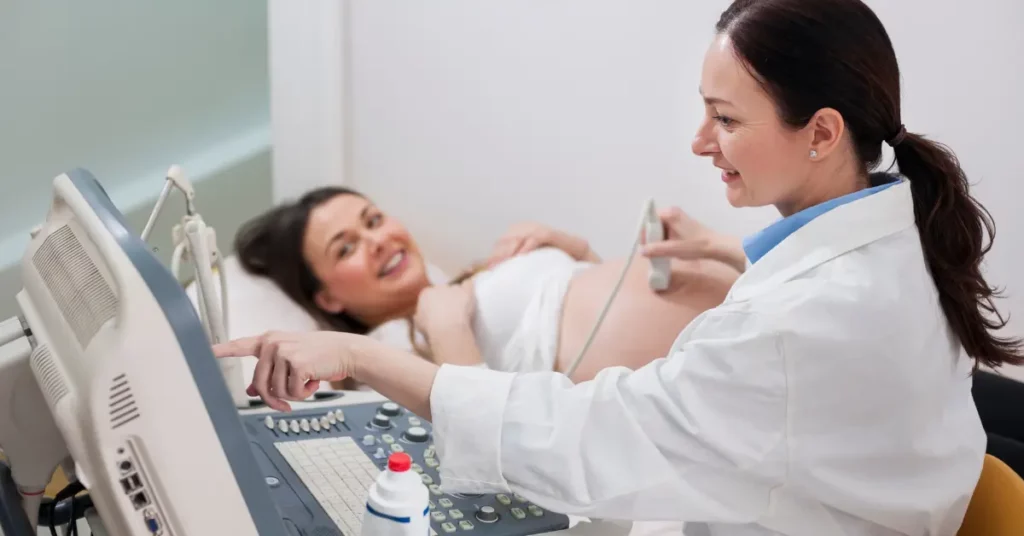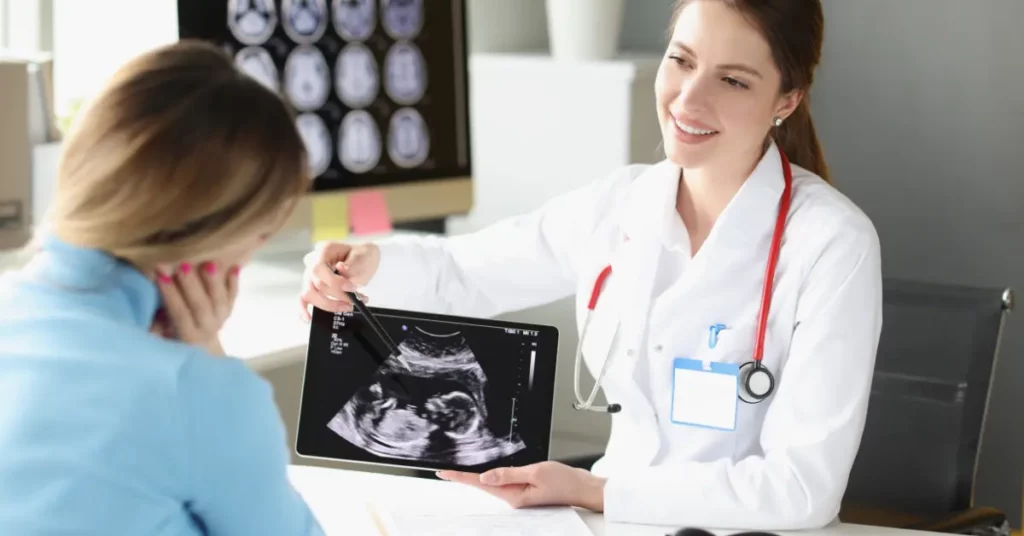
Why Laparoscopy Is Used in Infertility Treatment
This can play a dual role as both a diagnostic tool and a therapeutic intervention in an infertility workup. In other words, a doctor might do a diagnostic laparoscopy fertility evaluation to look for hidden problems, and if something is found, proceed immediately to fix it, making it a therapeutic laparoscopy fertility procedure in the same session. This “see and treat” approach is a big advantage of laparoscopy in fertility care. It’s typically considered after other noninvasive tests (like ultrasounds or HSG X-rays) if those tests haven’t pinpointed the cause of infertility. Common uses of laparoscopy in infertility include:
- Endometriosis – to confirm the presence of endometrial tissue growing outside the uterus and remove these implants. Endometriosis is a common cause of infertility, and laparoscopy is the gold standard for diagnosing and surgically treating it.
- Tubal Surgery – to address issues with the fallopian tubes. For example, a doctor can perform a laparoscopy for blocked fallopian tubes to check if the tubes are open by injecting dye, and if a blockage is found, attempt to clear it or remove scar tissue during the same operation. This can restore patency (openness) to the tubes and improve the chances of natural conception.
- Fibroid Removal – to remove uterine fibroids that may be impacting fertility. This procedure, also known as a laparoscopic myomectomy, allows the surgeon to cut out fibroids while preserving the uterus. Removing fibroids can relieve symptoms and often improve fertility prospects for many women.
- Ovarian Drilling – to treat certain cases of polycystic ovary syndrome (PCOS). In women with PCOS who do not ovulate with medication, ovarian drilling is a surgical ovulation induction method. This involves using laparoscopy to make tiny punctures in the ovaries, which can trigger regular ovulation – essentially a laparoscopy ovulation induction technique used when fertility drugs alone aren’t successful.
This procedure can uncover issues such as endometriosis, blocked tubes, pelvic scar tissue, or fibroids that could be missed otherwise. By identifying and often correcting these problems on the spot, laparoscopy can significantly enhance the effectiveness of an overall laparoscopy infertility treatment plan.
The Laparoscopy Procedure: What Happens During Surgery
If you have been scheduled for a laparoscopic fertility surgery, here’s what will typically happen on the day of the procedure. First, you’ll be given general anesthesia so that you are completely asleep and pain-free during the operation. Through one incision, a thin tube with a camera and light is inserted, allowing the doctor to see your pelvic organs on a screen. Through a second, tiny incision, the surgeon inserts specialized surgical instruments. The abdomen is gently inflated with carbon dioxide gas; this creates space and a better view of the uterus, fallopian tubes, ovaries, and surrounding area. Once the camera is inside, the surgeon examines the reproductive organs for any abnormalities. If dye testing of the fallopian tubes is planned, a blue dye will be passed through the cervix into the uterus to observe whether it spills out of the fallopian tubes. The surgeon can immediately address certain findings: for instance, removing any endometriosis lesions, cutting away adhesions, laparoscopy fibroid removal (myomectomy) for fibroids, or repairing a damaged tube. In many cases, diagnosis and treatment co-occur during a single laparoscopy. Despite all this activity, the procedure is usually well-tolerated. It is performed under general anesthesia and typically lasts about one to three hours in total.
After the surgical part is done, the instruments are removed, and the small incisions are closed. You’ll be moved to a recovery area to wake up from anesthesia. A laparoscopy, same-day fertility surgery, means you do not need to stay in the hospital overnight. You will likely go home a few hours after the procedure once you are awake and stable.
Recovery and Aftercare: What to Expect Post-Surgery
Recovery from laparoscopy tends to be quicker and easier than recovery from traditional open surgery. It is normal to feel a bit sore or tired afterwards. Right after the surgery, you might have some grogginess from the anesthesia and mild pain at the incision sites. Most patients also experience some bloating or shoulder pain – this shoulder tip pain happens because of the carbon dioxide gas used during the procedure, which can irritate the diaphragm and refer pain to the shoulder area. The good news is that any pain or discomfort is usually minimal and temporary. For example, it’s common to feel some abdominal or shoulder aches as the gas dissipates over a couple of days.
The laparoscopy recovery time is generally short. Many people can return to desk work or light activities within about a week or even a few days, depending on how they feel. Your doctor will give you specific guidance, but typically, you should plan to take at least 3 to 5 days off regular duties to rest. Everyone is a little different – some recover faster, especially if only diagnostic steps were done, while others might need closer to one week if more extensive work was performed. Most sources suggest taking between three days and a week off from work to recuperate, as even though the incisions are tiny and heal quickly, your internal organs need a bit of time to heal as well. During this recovery period, you may feel some fatigue as your body heals, so listen to your body and avoid overexertion.
Your surgeon will provide aftercare instructions. Common advice includes avoiding heavy lifting or strenuous exercise for a short period and avoiding inserting anything into the vagina for at least two weeks to allow the internal healing to progress. You will likely have small bandages or surgical glue over the incision sites – these should be kept dry according to instructions and will either dissolve or be removed at a follow-up visit. Watch for any signs of infection at the incision sites and report these if they occur. Complications are uncommon, and recovery is smooth. In fact, many patients are pleasantly surprised at how quickly they bounce back after this minimally invasive fertility surgery compared to what they imagined.
Risks and Safety Considerations
It’s important to be aware of the laparoscopy fertility risks so you can make an informed decision and know what to look out for. The most common issues after laparoscopy are minor and include things like mild pain, bruising, or temporary bloating. However, more significant risks include internal bleeding, infection, or injury to internal organs. In the context of fertility surgery, one specific concern is that manipulating the reproductive organs could, in rare cases, cause scarring. Scar tissue might form on the ovaries, uterus, or fallopian tubes after the surgery. If scar tissue forms in the fallopian tubes, for example, it could potentially affect future fertility or increase the chance of an ectopic pregnancy. Fortunately, such complications are not common. Laparoscopic surgery is generally considered very safe, but patients should understand that the procedure may cause a bit of internal scarring or injury in rare instances, which in turn could impact the ability to get pregnant. Your surgeon will take great care to minimize these risks. The benefit is that treating problems like endometriosis or blocked tubes usually far outweighs the small risk of creating new issues.

To put it in perspective, the vast majority of women have no major problems during or after a laparoscopy for infertility. Following your post-op care instructions will further reduce the risk of infection (for instance, by keeping incisions clean and dry). Suppose you notice warning signs such as a fever, worsening abdominal pain instead of improvement, very heavy vaginal bleeding, or foul drainage from an incision. In that case, you should contact your doctor right away, as these could indicate a complication that needs prompt attention.
Success Rates and Outcomes of Laparoscopic Fertility Surgery
One of the big questions patients have is: Will this surgery actually help me get pregnant? The answer often depends on your specific situation – what problem is found and fixed during the laparoscopy – but many patients do see improved fertility after laparoscopic treatment. In fact, laparoscopy can sometimes dramatically increase the chances of natural conception if it corrects an issue that was preventing pregnancy. For example, removing mild to moderate endometriosis lesions has been shown to improve pregnancy rates in the following year or so. Similarly, opening a blocked fallopian tube or removing a troublesome fibroid can make a significant difference in your ability to conceive. After a laparoscopic myomectomy, fertility often rebounds because the uterus can function more normally without the interference of fibroids.
It’s important to have realistic expectations. If the laparoscopy finds a correctable problem and fixes it, you may be able to try conceiving naturally in the subsequent months with a better chance of success than before. Your doctor will guide you on the timing – often they might suggest trying to conceive naturally or with help soon after you’ve healed, to take advantage of the “fixed” condition. In some cases, a combined approach is used: for instance, some couples pursue a laparoscopy and IUI combination approach. This means that after the woman recovers from laparoscopy, they proceed with a few cycles of intrauterine insemination (IUI) to further boost the chances of pregnancy. The logic is that once the physical obstacles are removed, treatments like IUI or ovulation induction medications might be more effective.
If laparoscopic surgery does not result in pregnancy after a certain period, the next step could be moving on to assisted reproductive technologies like IVF (in vitro fertilization). In today’s fertility practice, some doctors opt for IVF instead of laparoscopy in certain cases, especially if they suspect something like endometriosis but don’t want to do surgery. However, many others still see value in performing the laparoscopy first, particularly for younger patients or those with symptoms, because if the surgery resolves the issue, the patient may be able to conceive naturally or with simpler treatments. Your fertility specialist will personalize the plan for you. Just know that having a laparoscopy is generally a positive step because if it fixes the problem, you could achieve pregnancy without needing more invasive treatments.
Considering the Costs of Laparoscopic Fertility Surgery
Besides the medical aspects, you may also be wondering about the financial side of a laparoscopic fertility procedure. The laparoscopy fertility cost can vary widely depending on where you live, what specifically is done during the surgery, the facility fees, anesthesia fees, and whether your insurance covers any part of it. In many cases, if the laparoscopy is performed for a clear medical reason (such as treating endometriosis, removing fibroids, or opening blocked tubes), insurance may cover it or at least a portion of it. It’s worth checking with your insurance provider: some policies cover diagnostic and surgical treatments for infertility, while others might not cover procedures labeled as “infertility treatment.”
Out-of-pocket costs can range from a few hundred dollars (for those with good insurance coverage) to several thousand dollars if you have high deductibles or no coverage. For example, one survey of women undergoing laparoscopy for endometriosis found that while the average out-of-pocket cost was about $4,900, some patients paid nothing out of pocket, and others paid many thousands of dollars, depending largely on their insurance situation. This illustrates the significant variation in costs from person to person. If you do not have insurance coverage, discuss payment plans or pricing packages with your provider and hospital – many centers offer financing options or self-pay discounts.

- Laparoscopic fertility surgery is a valuable tool in the world of infertility treatment. It’s a minimally invasive procedure that can uncover and address problems like endometriosis, blocked fallopian tubes, fibroids, and more, all in one go. By knowing what to expect during laparoscopy, from the preparation and anesthesia to the recovery and outcome, you can approach the surgery with greater confidence and less anxiety. Most patients find that the experience is not as daunting as they feared: the surgery is performed under anesthesia, the incisions are tiny, and the recovery is relatively quick. The potential benefits for your fertility can be significant, especially if an issue is found and fixed. While there are some risks to be mindful of, serious complications are uncommon, and your medical team will take precautions to ensure your safety.
Sources
- Medical News Today – “What to know about laparoscopy for infertility” (Nicole Galan, RN, 2019), medicalnewstoday.com
- University of Utah Health – “Infertility Treatment: What to Expect During Laparoscopy”healthcare.utah.edu
- Southern California Reproductive Center – “Getting Pregnant after Laparoscopy: What You Need to Know”scrcivf.com
Endometriosis.net – “Out-of-Pocket Costs: Laparoscopic Surgery for Endometriosis”endometriosis.net